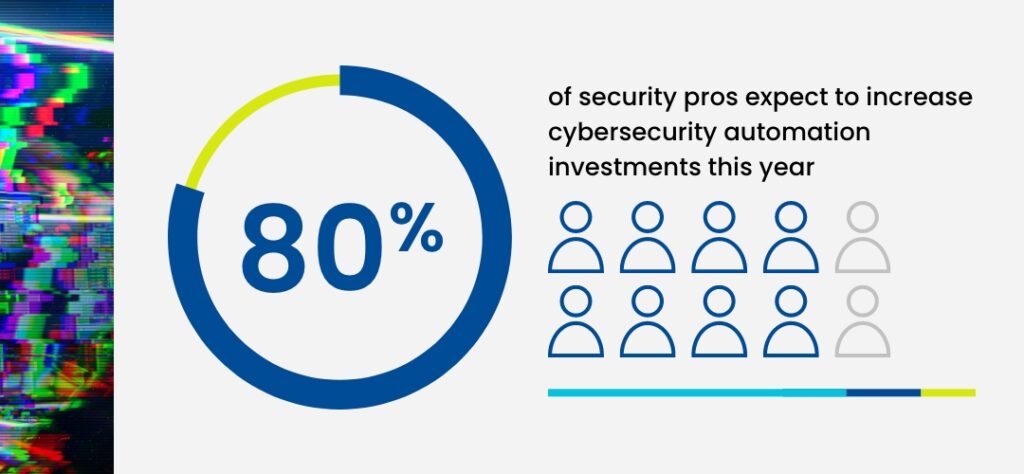
Budget cuts. Funding shortages. Fears of recession.
Headlines paint a bleak picture for organizations in 2023. To prepare for the turbulent year ahead, companies are scaling back their spending in droves. Yet, amid ruthless cost-cutting, many organizations are still prioritizing their investments in bulking up cybersecurity defenses. The question is, what are they spending these budgets on?
According to a new study from Wakefield Research, 80% of organizations indicated that they plan to increase investments in cybersecurity automation in the coming year, with the majority expecting a significant 6-10% increase. Security leaders are so excited by how automation has impacted their workflows that they are allocating more resources toward it, even in the thick of economic turbulence.
Here’s why they’re betting on automation.
Closing the talent gap
We’ve all heard that organizations are facing a massive cybersecurity talent shortage. And despite persistent outcry from security leaders and experts, it’s only getting worse. Security professionals can feel the effects of staffing shortages first-hand, as they battle to keep up with increasing attack surfaces and rapidly-evolving threats.
For many overworked security teams, automation offers a realistic way forward. In the Wakefield Research study, 100% of respondents indicated that increased automation in the security operations center (SOC) would be helpful to fill staffing gaps in their teams.
Most commonly, security teams found that automation was most helpful for completing tasks related to incident analysis (54%), landscape analysis of applications and data sources (54%), and threat detection and response (53%).
These results reiterate what we hear from our customers: Automation allows analysts to focus on bigger security problems and solutions, instead of being bogged down by repetitive, time-consuming tasks. By lightening the manual lift, they can better protect their organizations from threats and find more satisfaction in their roles. It can also enable junior analysts to punch above their weight by reducing the risk of errors and oversights.
Adopting automation is a win-win for security teams who desperately need more manpower, and organizations looking to cut hiring and training costs.
Automation pays off
More than ever, business leaders are acutely aware of the importance of strengthening their cybersecurity posture—91% of them believe there will be a catastrophic cyber event in the next two years. Paying attention to cybersecurity has even made its way to the boardroom, with 88% of board members classifying cybersecurity as a business risk vs. technology risk alone.
It’s no longer an option to have gaps in cybersecurity defenses. With the threat landscape becoming more complex and dangerous, organizations are increasingly turning to automation to keep their businesses secure and intact. And for good reason—100% of security professionals surveyed reported that using AI in cybersecurity resulted in positive business impacts.
When it comes to cybersecurity, time is of the essence. The longer it takes to remediate threats, the more costly an attack becomes. It’s therefore unsurprising that 65% of respondents cited automation led to financial gains.
Specifically, for over a third of organizations that saw financial benefits, leveraging automation in the SOC improved a hugely important metric: downtime. Automation ensures that organizations’ cybersecurity defenses move at the speed of their business, allowing teams to address issues in real time and keep mission-critical systems operational. Most importantly, automation-powered defenses keep customers happy by keeping services functional and readily available.
By reducing the time it takes to detect and respond to incidents, companies can minimize the harm done to their services, reputation, and bottom line. In simpler terms, investing in automation pays off.




